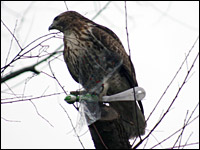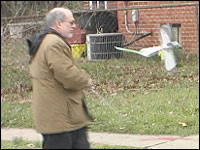Call Governor Richardson Immediately
(505) 476-2200
The U.S. Fish & Wildlife Service has issued an IMMEDIATE REMOVAL ORDER for the Aspen Wolf Pack of Mexican wolves in southwestern New Mexico. This pack includes two adult females and two pups. The Aspen Wolf Pack contains some of the most valuable genes in the wild population.
ABQjournal NM: Around New Mexico – Wolves Ordered Removed
LAS CRUCES— The U.S. Fish and Wildlife Service on Wednesday issued an order to remove two adult wolves and several pups from the wild due to livestock kills on ranches south of Magdalena.
The wolves targeted for removal include two adult females from the Aspen pack, the alpha female designated 667 and a yearling female 1046, along with pups born in the spring.
The pups will be trapped but the adult females might be killed if they are not readily captured by federal agents, Fish and Wildlife Service spokeswoman Elizabeth Slown said.
The Aspen pack adult females have been responsible for killing eight cattle since Jan. 9, Slown said.
The Aspen pack alpha male and two female pups were captured outside the wolf recovery area in New Mexico on Nov. 1. The alpha male and one pup are being held at a wildlife refuge north of Socorro, while the other pup was released and remains in the wild.
So far this year, federal agents have removed 11 wolves from southeast Arizona or southwest New Mexico and killed three others for livestock depredations.
The agency also continues to look for the three-member Durango pack, which disappeared from its range in the Gila National Forest earlier this month. Fish and Wildlife’s law enforcement officers are investigating the disappearance and a reward of up to $10,000 has been offered for information leading to an apprehension.
ABQjournal NM: Wildlife Service Seeks Input on Wolf Recovery By Rene Romo, Journal Southern Bureau
LAS CRUCES— The U.S. Fish and Wildlife Service on Thursday will hold the first of six scoping sessions in New Mexico to gather public comment about possible changes to the federal recovery effort for the endangered Mexican gray wolf.
”We have been reintroducing wolves into the wild for nine years now and we’ve learned a thing or two,” said Brian Millsap of the U.S. Fish and Wildlife Service, the lead agency for the program. ”We want to hear from everyone else on what they have learned and what their recommendations are for recovering the Mexican wolf.”
The Fish and Wildlife Service held the first of 12 open-house style meetings across Arizona and New Mexico on Monday night in Flagstaff.
The scoping sessions are designed to gather public comments, from supporters and critics of the reintroduction effort, in order to draft proposed changes to the rule governing management of the wolf population, which numbers about 59 in southeast Arizona and southwest New Mexico.
Fish and Wildlife will then conduct an environmental impact statement and a socioeconomic assessment of the draft proposed rule.
Dave Parsons, former Fish and Wildlife Service director of the wolf recovery program, said, ”This is the public’s opportunity to have input into the content of the environmental assessment, before they actually start it.”
The schedule of the New Mexico sessions:
# Thursday, Grants, Best Western, 1501 E. Santa Fe Ave., 5-9 p.m.
# Friday, Albuquerque, Indian Pueblo Cultural Center, 2401 12th St. NW, 5-9 p.m.
# Saturday, Socorro, Macey Conference Center, New Mexico Tech, 11 a.m.-3 p.m.
# Monday, Alamogordo, Tays Special Events Center, New Mexico State University Branch, 2400 N. Scenic Drive, 5-9 p.m.
# Dec. 4, Las Cruces, Farm and Ranch Heritage Museum, 4100 Dripping Springs Road, 5-9 p.m.
# Dec. 5, Glenwood, Glenwood Community Center, 5-9 p.m.
– – – – –
Submit written comments by 12/31/07. Include “Attn: Mexican Gray Wolf NEPA Scoping,” your full name and return address. Send comments to:
Brian Millsap, State Administrator
US Fish and Wildlife Service
New Mexico Ecological Services Field Office
2105 Osuna NE
Albuquerque, NM 87113
fax: 505-346-2542
email: r2fwe_al@fws.gov
www.mexicanwolfeis.org
www.mexicangraywolf.org




